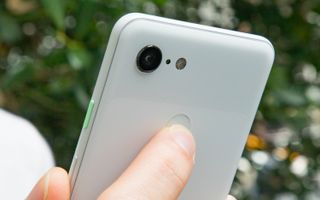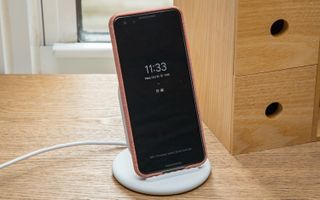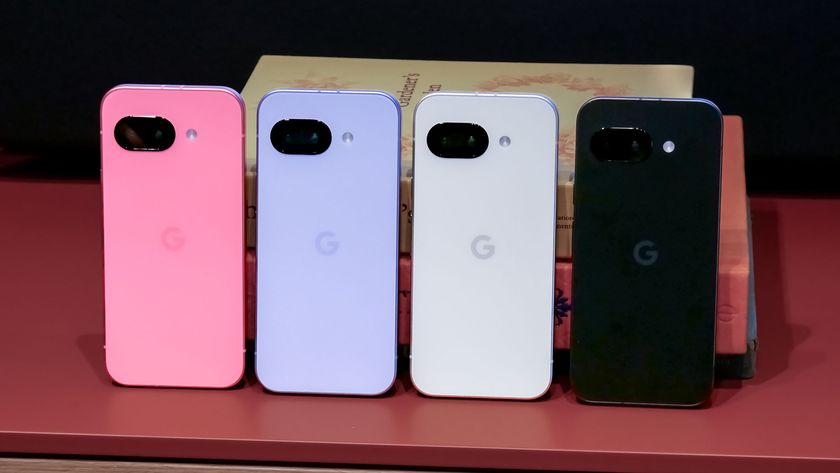Why the Pixel 3 Is the Most Innovative Phone of the Year
While the latest iPhones and Samsung Galaxy are reportedly flailing, Google's Pixel 3 demonstrates how to make a phone that makes your life easier and better.
If you look around the smartphone landscape right now, it's not pretty. Apple is reportedly having trouble moving both the iPhone XR and iPhone XS and is reassigning marketing people to bolster sales. And Gartner just announced the biggest decline in smartphone sales since the analyst firm started tracking them.

Why the ho-hum reaction to 2018's crop of smartphones? It's partially because people are holding onto their phones longer, but it's also because the biggest names in the industry simply didn't innovate much this year.
Chinese giants like Huawei and Xiaomi have pushed the envelope in 2018 with their new handsets — especially the Huawei Mate 20 Pro— but their phones aren't readily available in the U.S. As good as the new phones from Apple and Samsung have been this year, they aren't big departures from what we've already seen.
But there's one smartphone maker that has innovated more than anyone else and whose devices are fairly easy to get your hands on, and that's Google.
Topping our list of Innovation Award winners for 2018, the Pixel 3 and Pixel 3 XL don't look much different than their predecessors, but there are lots of small and big leaps forward crammed into these flagships, especially in regard to the camera. Here are just a few things that stand out about Google's phones.
Night Sight is jaw-dropping and amazingly useful
I've been taking a ton of photos with Google's new Night Sight mode enabled and disabled, and the results are literally night and day.

Because the Pixel 3 takes a number of continuous frames and merges them, the results are astoundingly good even in close to complete darkness. You simply don't need a flash to get a great picture in low light, and that's a fantastic achievement. (Night Sight is even available for older Pixel phones)
You simply don't need a flash to get a great picture in low light, and that's a pretty fantastic achievement.
The Pixel 3 also generally takes sharper pics than the competition in challenging lighting conditions. It delivers more accurate hues and better contrast. I noticed this right away when comparing a shot of a Christmas tree taken by both Google's flagship and the iPhone XR.
Top Shot picks the best photo for you
Say you're taking a group pic and someone blinked in one frame and someone got distracted in another shot.

Using machine learning, Google knows the attributes of the good photo and can recommend the best image in a bunch collected just before and just after you press the shutter button. You can also scroll through the images yourself and pick your own favorite, if you're so inclined.
Call Screen is your phone's bouncer for spam calls
Robocalls are out of control, and the bad guys are getting more sophisticated, targeting users with phone numbers that are from your own area code. How do you know when you should answer? On the Pixel 3, Google Assistant can screen your calls for you with the push of a button and transcribe what that telemarketer is saying in real time. It works very fast, and is surprisingly accurate.
MORE: Pixel 3 vs. iPhone XR: Battle of the Affordable Flagships
Android Pie and Slices
While other phones are getting Android 9 Pie, the Pixel 3 was the first to ship with Google's new OS, and it includes plenty of handy features. My favorite is Slices, which essentially serves up the best bits of apps to save you time. For example, if you search for Lyft on the Pixel 3, you'll see a time-saving shortcut for getting a ride to work that also displays pricing.
Marketing matters
If you want people to buy your phones, the marketing has to spell out that you should shell out $750 to $1,100. But I think the ads for the iPhone XR and XS don't speak to meaningful innovation at all.

The first commercials for the iPhone XS Max, for example, were all about the big, 6.5-inch display. Big screens are not new. And the iPhone XR's first ad was all about the multiple color options. Enticing, yes, but the vast majority of people are just going to put a case on their phone.
I've had more than one person say to me, 'I wish the iPhone could do that.'
The marketing around the Galaxy Note 9 also landed with a thud. So it has a big battery. That's nice, and it is useful, but that's not innovative. And the new S Pen tricks touted in another spot come across as more gimmicky than practical.
When I watch the Google's Pixel 3 ads, they do an excellent job of explaining the benefits of features like Top Shot, Night Sight and the not-so-new Flip to Shhh in a way that’s humorous and enlightening. I've had more than one person say to me, "I wish the iPhone could do that."
Some early bugs
The Pixel 3 and Pixel 3 XL are definitely not perfect. In fact, Google just released an update that addresses several bugs, including a bad-memory performance issue that was causing apps running in the background to shut down. Another bug prevented some photos from being saved, which is ironic given that the Pixel 3 is now the best camera phone.
It definitely doesn't count as innovation, but it's nice that Google was able to address these issues fairly quickly.
MORE: The Most Innovative Tech of 2018
Bottom Line
The Pixel 3 and Pixel 3 XL won't top the sales charts, and that's because they're inexplicably sold only through Verizon in the U.S., at least as far as major carriers go. (You can also get them through the lesser-known Google Fi wireless service.) And while you can buy Google's phones unlocked, most people here don't buy their phones that way.
Regardless, the Pixel 3 and Pixel 3 XL are the most innovative phones of the year, and Google deserves a lot of credit for solving real-world problems with its flagships.
Credit: Tom's Guide
Sign up to get the BEST of Tom's Guide direct to your inbox.
Get instant access to breaking news, the hottest reviews, great deals and helpful tips.
Mark Spoonauer is the global editor in chief of Tom's Guide and has covered technology for over 20 years. In addition to overseeing the direction of Tom's Guide, Mark specializes in covering all things mobile, having reviewed dozens of smartphones and other gadgets. He has spoken at key industry events and appears regularly on TV to discuss the latest trends, including Cheddar, Fox Business and other outlets. Mark was previously editor in chief of Laptop Mag, and his work has appeared in Wired, Popular Science and Inc. Follow him on Twitter at @mspoonauer.



